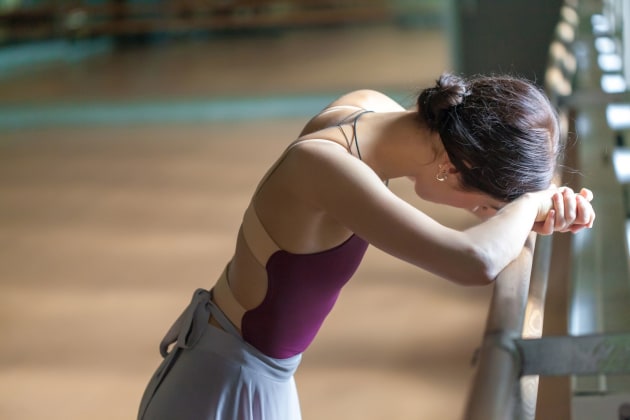New research shows increase in dance injuries
New dance research has identified fatigue and overuse as major contributing factors to injury in Australia’s professional dancers.
The Safe Dance Report IV: Investigating injuries in Australia’s professional dancers, published today on the Ausdance National website, examines the Australian context and occurrence of injury in professional dancers and makes recommendations to support sustainable, healthy, and productive dancing careers.
A collaboration between The University of Sydney and Ausdance National, Safe Dance IV is the fourth in a series of Safe Dance research projects. It continues the important work started by Ausdance National almost 30 years ago.
The survey of 195 Australian professional dancers found 97% experienced at least one significant injury in their dance career, compared with 89% in 1999. And 73% of dancers reported experiencing a dance-related injury in the past 12 months.
Author and lead researcher Amy Jo Vassallo, a PhD candidate at the Faculty of Health Sciences at The University of Sydney, said the consequences of these injuries can be quite substantial and include missed performance opportunities and income, ongoing pain and disability, and expensive treatment including surgery. Serious injuries can even lead to early retirement from dance careers and lifelong pain and dysfunction.
"The proportion of dancers reporting fatigue as a contributing factor to their injury has increased from 26% in 1990 and 33% in 1999 to 48% in 2017," she said.
"However, compared with previous Safe Dance survey results, fewer dancers reported poor technique or environment as a contributor to their injury. This demonstrates the benefits of education, policies and interventions regarding safe dancing practice for dancers and teachers at all stages of a dance career, including early teaching
and pre-professional training."
Ausdance National President, Professor Gene Moyle, said the Safe Dance Report IV continues an important lineage for the Australian dance community. Hearing the words “safe dance practice” being so much a part of our language and approach within the dance sector today is a testament to the impact and contribution of the collective Safe Dance reports within our industry.
Recommendations have outlined that access to dance-educated or dance-specialised healthcare services is essential; addressing the cultural aspects of injury reporting is critical; and that a better acknowledgement of the psychological and psychosocial aspects of injury is required.
Key findings
Survey respondents’ employment as a dance performer was most commonly with a dance company (66%) or as an independent dance artist (38%).
Injuries remain common in professional dance, with 73% of professional dancers reporting experiencing an injury in the past 12 months. The most common site of injury was the ankle (26%), followed by the knee (11%) and hip (10%).
The most common injury type was a strain (25%), followed by chronic inflammation (19%) and a sprain (18%). There was one accidental or traumatic injury for every two overuse or gradual injuries. The most common responses regarding the self-reported contributor to injury were fatigue (48%), followed by new or difficult choreography (39%) and ignoring early warning signs (31%).
Despite 62% of respondents reporting belief that there is still stigma associated with sustaining injuries as a professional dancer, 75% of dancers did say they would seek professional opinion if they suspected an injury. However, only 50% stated they would tell someone within their dance employment and 49% said they would also take their own preventative steps to manage their injury.
Despite seeing a clinician for treatment of their injury, 40% of dancers whose injury was currently unresolved were unsure if their injury would resolve in the foreseeable future. This indicates that many dancers need to be provided with improved and realistic expectations of their injury, capacity to dance during their injury and likely return to full dance ability.
See Ausdance website here.



